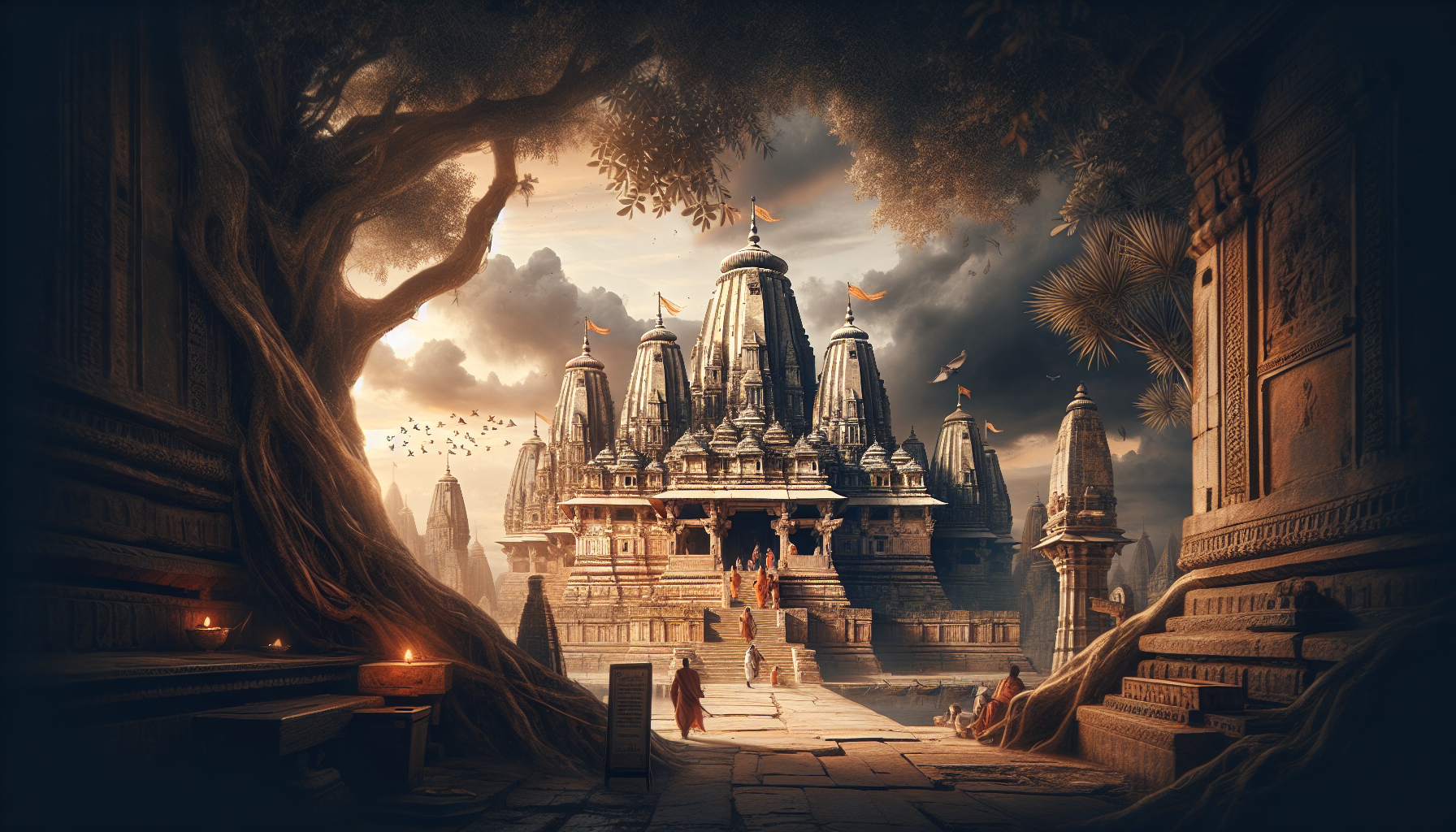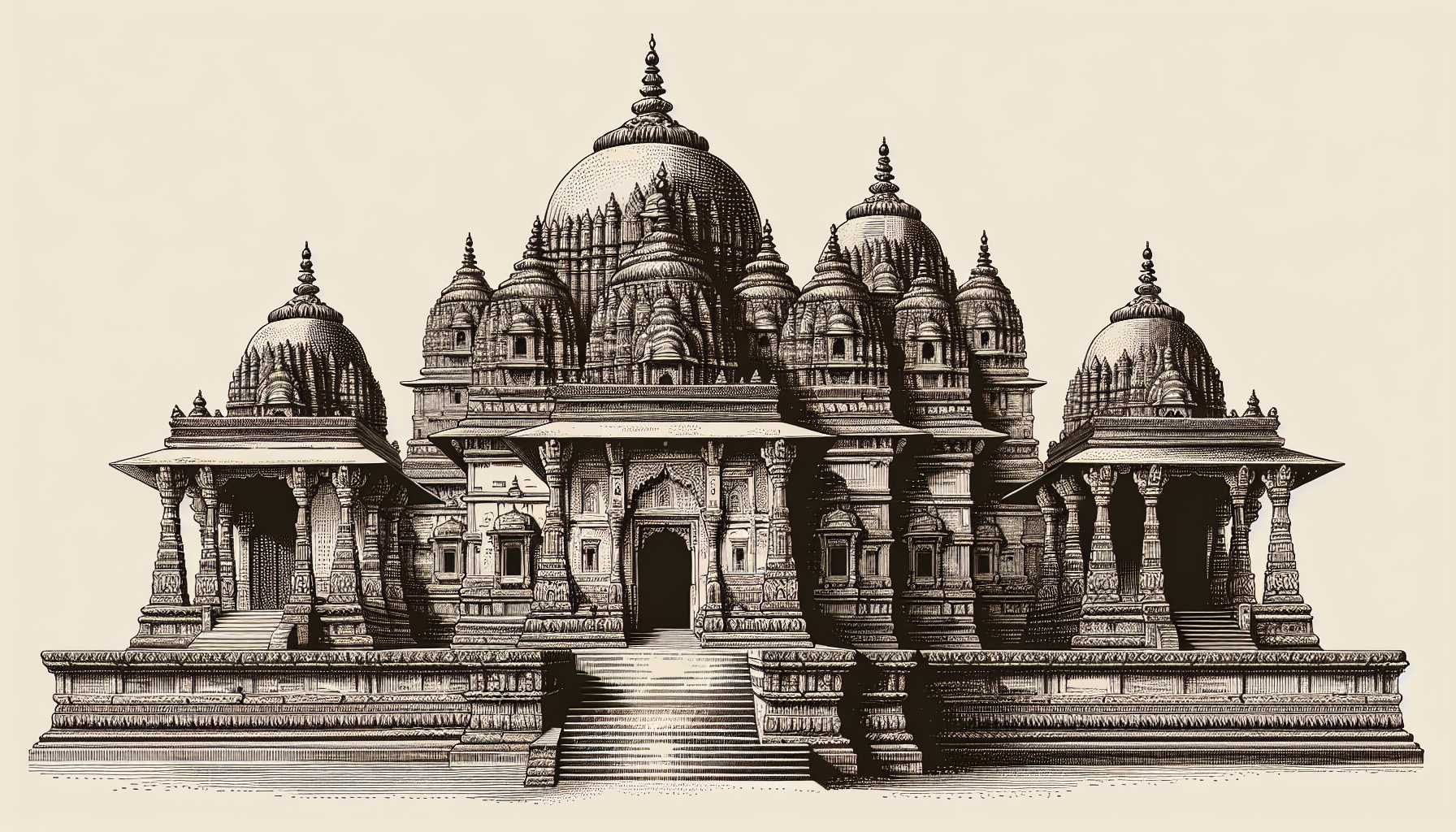Have you ever wondered about the age of the renowned Ram Mandir in Ayodhya? This iconic temple holds immense cultural and religious significance for millions around the world. With its rich history entwined with legends and myths, it is a captivating structure that has stood the test of time. But just how old is this magnificent temple? In this article, we will explore the age-old question and uncover the fascinating answer that lies within the ancient walls of the Ram Mandir in Ayodhya. Join us on this journey as we delve into the depths of history to unlock the secrets of its age.

Table of Contents
Historical Background
Ramayana: The Legend of Ram
The historical background of the Ram Mandir in Ayodhya begins with the epic tale of Ramayana. Ramayana, which means “the journey of Lord Ram,” is an ancient Indian epic that narrates the life and adventures of Lord Ram, an incarnation of Lord Vishnu. This epic, written by sage Valmiki, portrays Lord Ram’s life, his triumphs over evil forces, and his ultimate purpose of establishing dharma (righteousness) on earth. Lord Ram’s birthplace and his association with Ayodhya hold immense significance in Hindu mythology and history.
Archaeological Evidence
The historical authenticity of Lord Ram and his connection with Ayodhya is supported by extensive archaeological evidence. Excavations carried out by the Archaeological Survey of India have unearthed remnants of structures that date back to the prehistoric era, indicating the antiquity of Ayodhya as a sacred place. These findings further strengthen the belief that Ayodhya was indeed the birthplace of Lord Ram and an important center of ancient civilization.
Babri Masjid and the Dispute
The controversial chapter in the history of the Ram Mandir in Ayodhya started with the construction of the Babri Masjid in the 16th century. The disputed site was believed to be the birthplace of Lord Ram, and there were conflicting claims regarding the presence of a temple at the location before the construction of the mosque. This led to a long-standing dispute between the Hindu and Muslim communities, fueling tensions and legal battles that would span several centuries.
Ancient Origins
Birthplace of Lord Ram
According to ancient texts and Hindu mythology, Ayodhya is considered the birthplace of Lord Ram. This ancient city, situated on the banks of the Sarayu River in Uttar Pradesh, India, holds immense religious and historical importance for millions of Hindus worldwide. Lord Ram is revered as the seventh incarnation of Lord Vishnu, and his birthplace has always been regarded as a sacred site.
Existence of Temple at the Site
Historical accounts and oral traditions suggest the presence of a temple dedicated to Lord Ram at the site of the disputed structure even before the construction of the Babri Masjid. Many believe that the temple stood for several centuries, serving as a revered pilgrimage site for devotees of Lord Ram.
First Historical Record
The first documented evidence associating the disputed site with the birthplace of Lord Ram can be traced back to the 19th century. The book “Ain-i-Akbari,” a historical record from the Mughal era written by Abul Fazl, mentions a temple dedicated to Lord Ram in Ayodhya. This mention in a Mughal court document provides substantial support to the claims of the existence of the temple at the site.
Medieval Period
Vijayanagara Empire’s Contribution
During the medieval period, the Vijayanagara Empire played a crucial role in the preservation and patronage of Hindu temples, including the Ram Mandir in Ayodhya. The empire, known for its religious tolerance and cultural patronage, contributed significantly to the development and establishment of Hindu temples across South India.
Mughal Rule and the Babri Masjid
The Mughal rulers, including Emperor Babur, ruled over large parts of India during the medieval period. In the 16th century, Babur’s general, Mir Baqi, is believed to have constructed the Babri Masjid at the disputed site in Ayodhya. This event marked a significant shift in the historical narrative of the site, establishing the presence of a mosque in place of the earlier temple.
Descriptions by Travelers in 17th Century
Travelers and historians who visited Ayodhya during the 17th century provide additional insights into the historical and religious significance of the site. The accounts of European travelers like William Finch and Jean-Baptiste Tavernier mention the existence of a large temple at the site in their travelogues. These descriptions further corroborate the belief in the presence of a temple before the construction of the Babri Masjid.
Construction of Babri Masjid
Mir Baqi and Emperor Babur
As mentioned earlier, Mir Baqi, a general in Emperor Babur’s army, is credited with the construction of the Babri Masjid in Ayodhya. The Mughal ruler, Emperor Babur, is believed to have given permission for the construction of the mosque, considering it a symbolic conquest of the Hindu holy site.
Significance of the Mosque
The Babri Masjid held religious significance for the Muslim community. Built as a place of worship and devotion, it became an integral part of the religious and cultural fabric of Ayodhya. The mosque attracted devotees from different parts of the country, solidifying its importance as a center of Islamic worship.
Muslim Rule and the Temple Site
For centuries, the Babri Masjid coexisted with the belief held by Hindus that the site was the actual birthplace of Lord Ram. This coexistence, although not without tensions and disputes, is a testament to the syncretic nature of India’s history. However, the dispute over the temple site simmered beneath the surface, waiting to erupt into a major controversy.

Controversy and Destruction
Rise of Babri Masjid Controversy
The controversy surrounding the Babri Masjid reached its boiling point in the late 20th century. Various Hindu organizations and individuals started demanding the reconstruction of the Ram Mandir at the disputed site, citing historical and religious reasons. This sparked a highly polarized debate and ignited communal tensions across the country.
Demolition of the Babri Masjid
The Babri Masjid was tragically demolished on December 6, 1992, in a highly controversial act by Hindu activists. The demolition of the mosque caused nationwide uproar and led to violent communal clashes, resulting in the loss of numerous lives. This event further intensified the already charged atmosphere surrounding the disputed site.
Legal Battle and Archaeological Surveys
Land Dispute and Court Cases
Following the demolition of the Babri Masjid, a legal battle ensued over the ownership and control of the disputed site in Ayodhya. Multiple court cases were filed by both Hindu and Muslim parties, seeking resolution and claiming their rights over the land. The legal battle stretched over decades, and the matter reached the apex court of India.
Archaeological Survey of India’s Findings
To ascertain the historical truth and resolve the contentious issue, the Archaeological Survey of India (ASI) conducted extensive excavations at the disputed site in Ayodhya. The findings of the ASI, presented in their report, confirmed the existence of structural evidence related to a large and ancient temple beneath the site of the Babri Masjid. This archaeological evidence further fueled the demands of the Hindu community for the construction of the Ram Mandir.
Demand for Ram Mandir
Hindu Nationalism and Ayodhya Movement
The demand for the construction of the Ram Mandir gained significant momentum during the rise of Hindu nationalism in India. The Ayodhya movement, led by various Hindu organizations and political leaders, galvanized the Hindu community’s sentiments, centering their focus on reclaiming the birthplace of Lord Ram.
Political Parties and Public Sentiment
The Ram Mandir issue became a key political agenda, with various political parties actively participating in the debate. The sentiments and aspirations of the public played a crucial role in shaping the narrative around the construction of the Ram Mandir. The demand for the temple became a rallying point for Hindu unity and cultural identity.
Building of Ram Mandir
Supreme Court Verdict
The protracted legal battle finally came to an end in November 2019 when the Supreme Court of India passed a historic judgment on the Ayodhya land dispute. The court ruled in favor of the Hindu litigants, allowing the construction of a Ram Mandir at the disputed site, while also directing the allocation of an alternative plot of land for the construction of a mosque.
Foundation Laying Ceremony
On August 5, 2020, a grand foundation-laying ceremony for the Ram Mandir took place in Ayodhya. Prime Minister Narendra Modi and other key dignitaries attended the event, marking the beginning of the construction phase. The ceremony was conducted with great religious fervor and enthusiasm, reflecting the significance of the moment for millions of devotees.
Construction Timeline
The construction of the Ram Mandir is expected to be carried out in multiple phases, with the main temple complex being built over several years. The timeline for the completion of the entire project is yet to be finalized, and it will depend on various factors, including logistical considerations and availability of resources.
Religious Significance
Reverence for Lord Ram
Lord Ram is revered as the ideal embodiment of righteousness, compassion, and devotion in Hinduism. The construction of the Ram Mandir in Ayodhya holds immense religious significance for millions of Hindus, as it symbolizes the fulfillment of a long-cherished dream and reaffirms their faith in Lord Ram’s divine presence.
Pilgrimage Destination
Ayodhya, with the newly constructed Ram Mandir, has become a major pilgrimage destination for devotees of Lord Ram. The temple complex is expected to attract millions of pilgrims from all corners of the world, further strengthening Ayodhya’s status as a sacred place of worship and spirituality.
Unity and Harmony
The construction of the Ram Mandir is seen by many as a step towards fostering unity and harmony among different religious communities. It is hoped that the temple will serve as a symbol of mutual respect and understanding, promoting interfaith dialogue and peaceful coexistence among diverse groups.
Conclusion
Historical Legacy of Ram Mandir
The Ram Mandir in Ayodhya carries a historical legacy that traces back centuries, intertwining myth, history, and religious belief. The long-standing dispute and the subsequent construction of the temple have left an indelible mark on the social, political, and cultural fabric of India, highlighting the complex interplay between faith, history, and legal rights.
Symbol of Faith and Cultural Identity
For the millions of devotees who worship Lord Ram, the Ram Mandir in Ayodhya is not merely a physical structure but a symbol of their unwavering faith and cultural identity. The construction of the temple represents the culmination of a collective aspiration and the triumph of religious beliefs, standing as a testament to the enduring power of faith and the resilience of the human spirit.